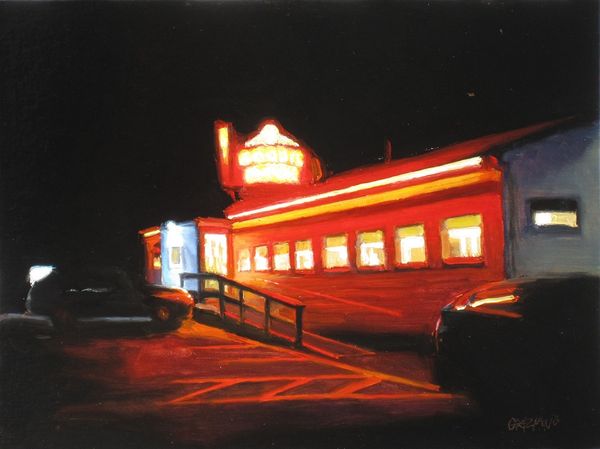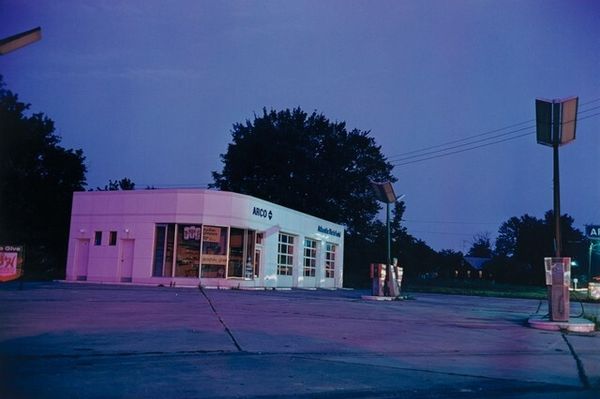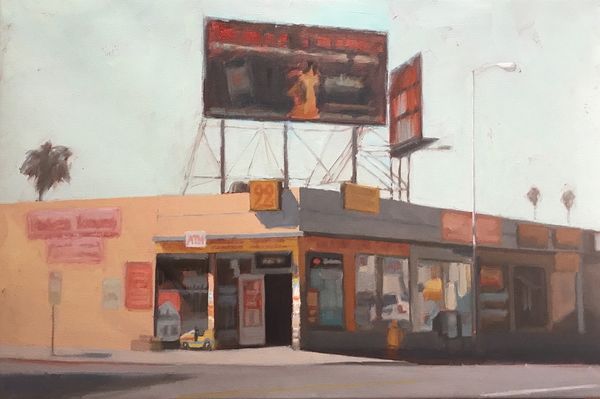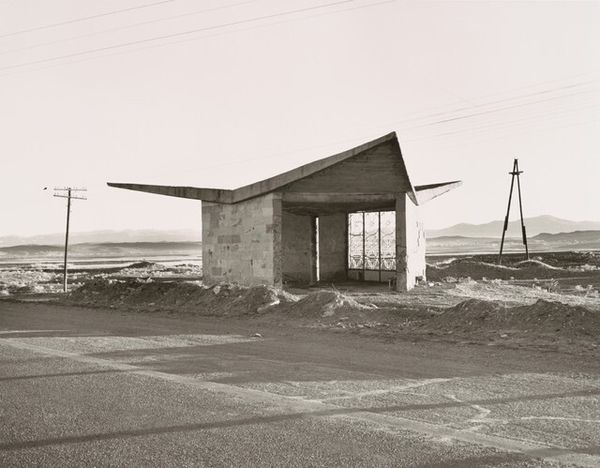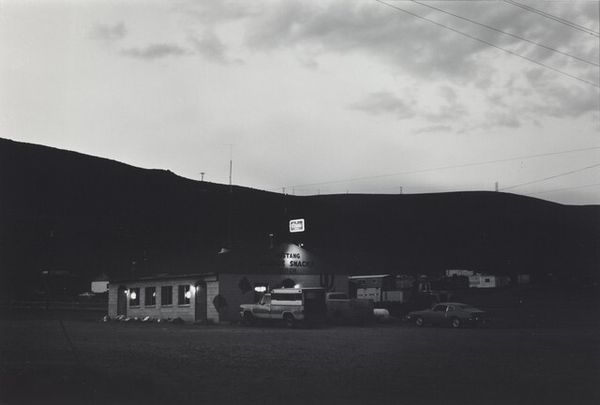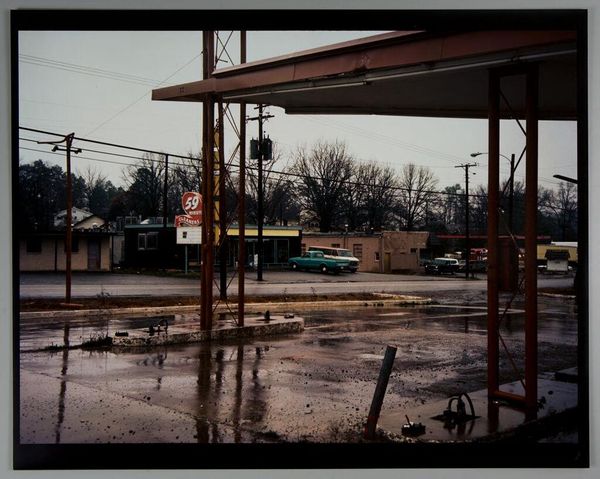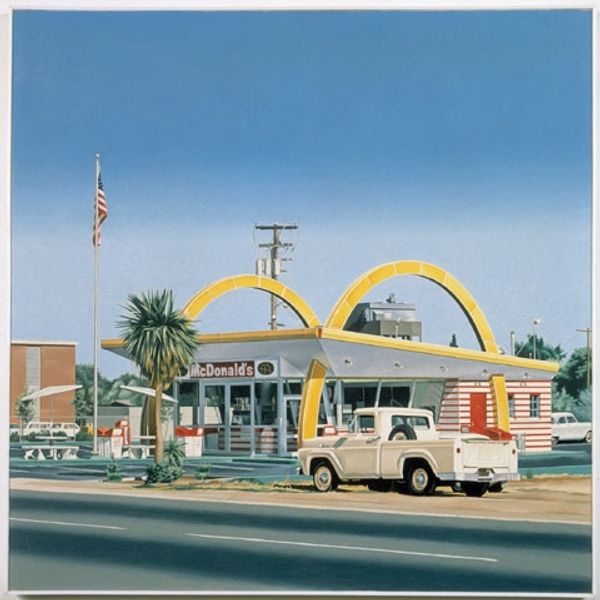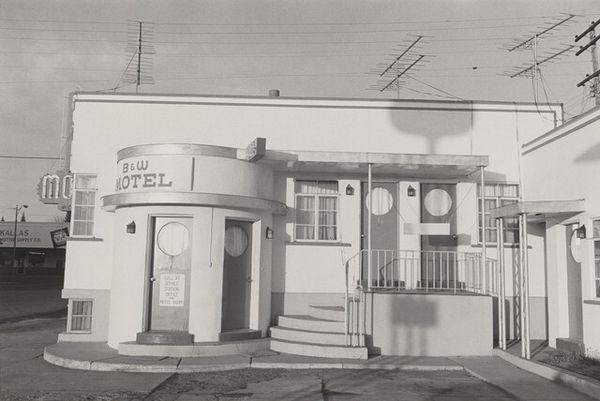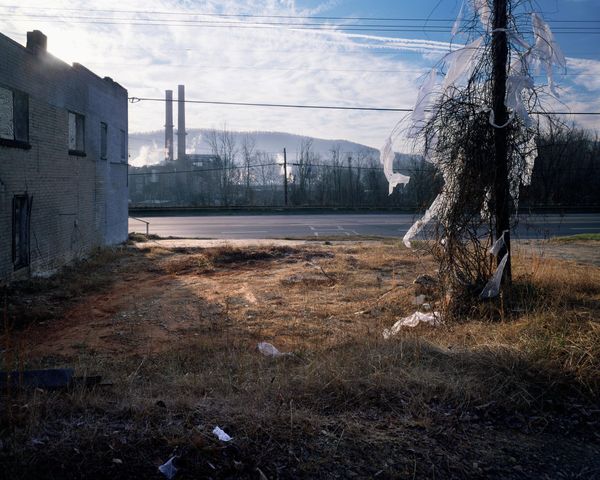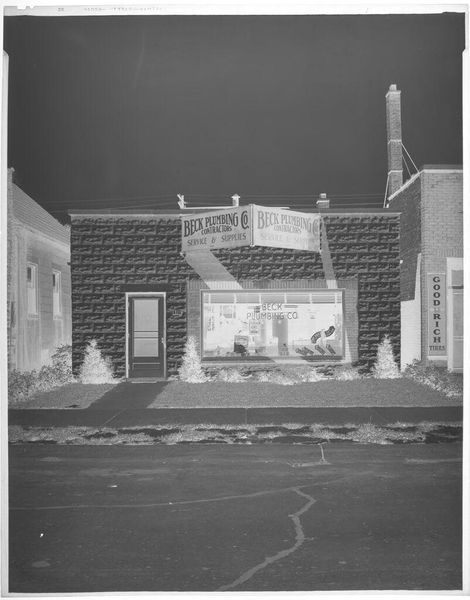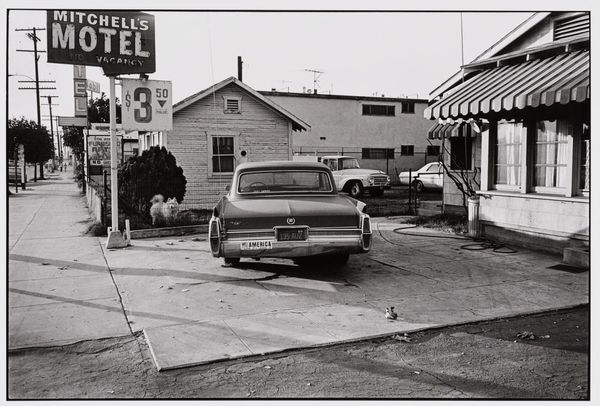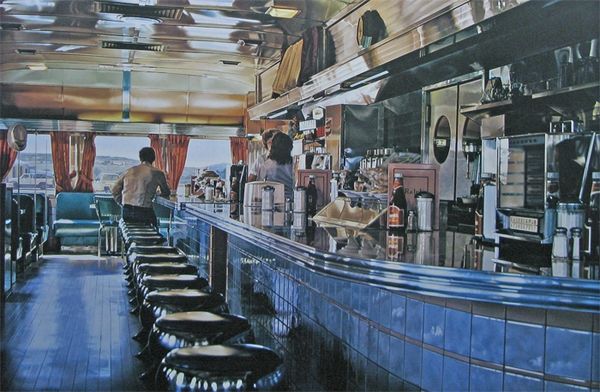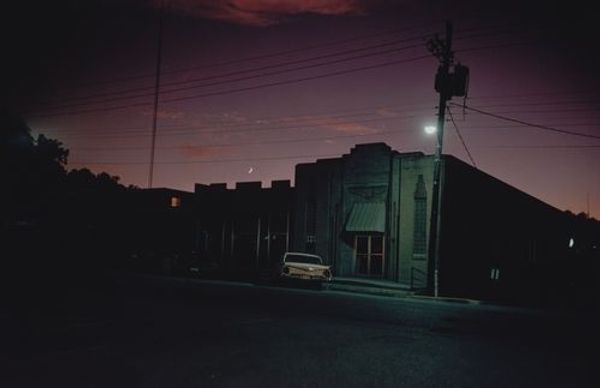
plein-air, photography
#
postmodernism
#
plein-air
#
landscape
#
outdoor photography
#
photography
#
cityscape
#
realism
Dimensions: image: 24.2 × 30.6 cm (9 1/2 × 12 1/16 in.) sheet: 27.9 × 35.7 cm (11 × 14 1/16 in.)
Copyright: National Gallery of Art: CC0 1.0
Editor: This photograph, "Little Chef in Rain, St. Neots, Cambridgeshire" by Paul Graham, taken in 1982, really evokes a sense of bleakness. The red of the Little Chef and gas station almost feels jarring against the grey sky and rain-slicked pavement. What stands out to you about this image? Curator: The seemingly banal scene, photographed *en plein air*, becomes interesting when we consider the politics of imagery. This photograph comes from Graham's series "A1 – The Great North Road", which aimed to document contemporary England, not through grand historical events, but through the everyday experience of the road. Editor: So, the choice of subject matter itself is significant? Curator: Precisely. Consider what locations and people are deemed worthy of representation in art, especially publicly funded art. Graham is making a statement about what constitutes "Englishness" in the 1980s, focusing on the service stations and roadside diners that catered to a nation on the move. It challenges traditional landscape painting which focused on stately homes and picturesque villages. Editor: I see. So instead of idealized views, he’s presenting a more… democratic vision? Curator: One could say that. Think about the social context: increased car ownership, the rise of fast food, the changing landscape of England. The red branding of the Little Chef and the gas station acts as a visual shorthand for this new, consumer-driven society. But does that intense red offer promise or warning in this dreary English landscape? Editor: It’s definitely more complex than I initially thought. I hadn't considered how this image reflected larger social changes. Curator: Graham’s photography makes us question what is typically represented, and who gets to decide. The public role of art and its cultural implications should invite scrutiny from us all. Editor: This was really illuminating. I’ll never look at roadside diners the same way!
Comments
No comments
Be the first to comment and join the conversation on the ultimate creative platform.
